
| Black Jezabel (one synonym : Papilio lewini Thon, 1828) PIERINAE, PIERIDAE, PAPILIONOIDEA | (donherbisonevans@yahoo.com) and Stella Crossley |
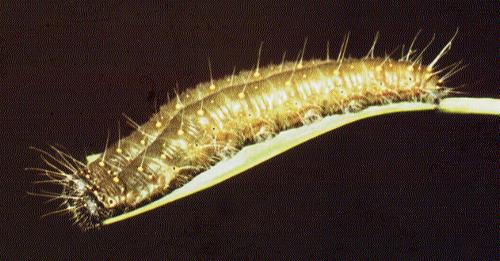
Twins

| Black Jezabel (one synonym : Papilio lewini Thon, 1828) PIERINAE, PIERIDAE, PAPILIONOIDEA | (donherbisonevans@yahoo.com) and Stella Crossley |

Twins
This Caterpillar is dark green with two rows of yellow spots, each sprouting a white hair. The head is black. The caterpillars feed gregariously on various species of Mistletoes (LORANTHACEAE) including :
The effects of temperature on the development of the caterpillar has been studied.
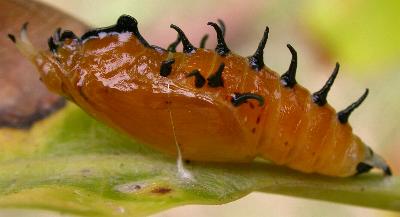
It pupates on the foodplant or nearby. The pupae are orange with black spikes and a pair on long white horns on the head.
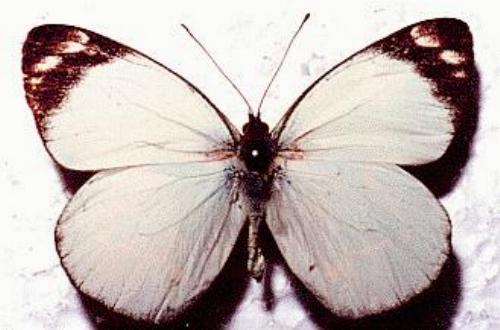
The upper sides of the male adult butterflies are white with black tips containing white spots on the forewings, and narrow black margins around the hindwings.
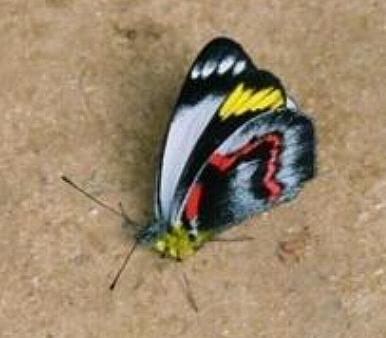
The females on top are grey with wide black edges, which contain white spots near the forewing tips.
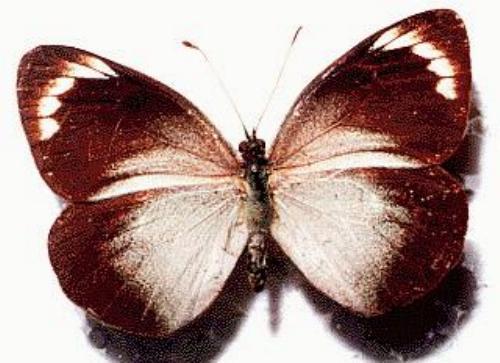
Underneath, both sexes are black with a yellow band on the forewing, and an irregular broken red loop around each hindwing. The adults have a wingspan of about 4 cms.
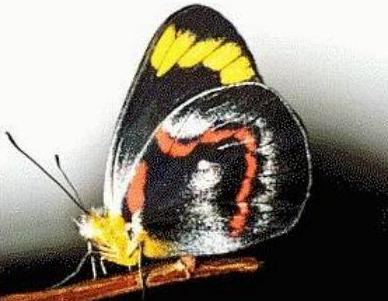
An unusual form with yellow underneath occurs occasionally.
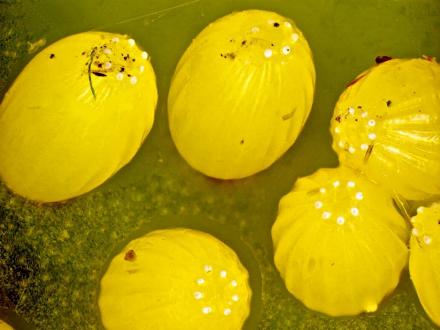
The eggs of this species are barrel-shaped with about 16 ribs. Each is yellow and has a height of about 0.15 cm. They are laid in groups on the foodplant.
The species occurs along the eastern seaboard of Australia, from
Further reading :
Michael F. Braby,
Butterflies of Australia,
CSIRO Publishing, Melbourne 2000, vol. 1, pp. 336-337.
Johan Christian Fabricius,
Entomologia systematica emendata et aucta,
Volume 3, Part 1 (1793), p. 200, No. 625.
Peter Hendry,
A "new" host plant for the Black Jezebel (Delias nigrina) butterfly,
Butterflies and Other Invertebrates Club,
Club Newsletter,
Issue 48 (March 2008), pp. 15-16.
Ross Kendall,
A new host plant for the Black or Common Jezebel butterfly (Delias nigrina),
Butterflies and Other Invertebrates Club,
Metamorphosis Australia,
Issue 62 (September 2011), pp. 26-27.
Buck Richardson,
Tropical Queensland Wildlife from Dusk to Dawn Science and Art,
LeapFrogOz, Kuranda, 2015, p. 224.
 caterpillar |  butterflies |  Lepidoptera |  moths |  caterpillar |
(updated 1 May 2009, 24 July 2024)